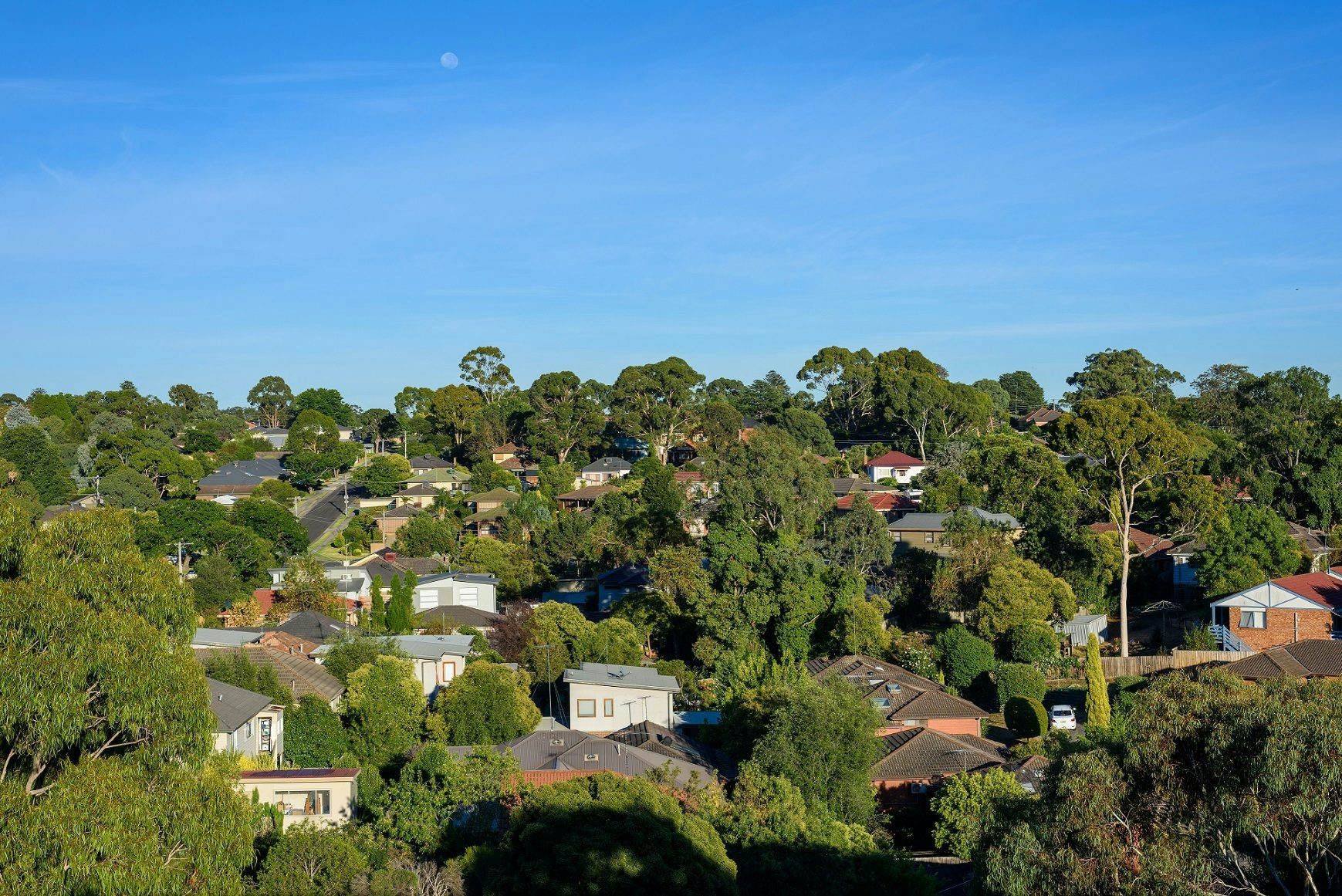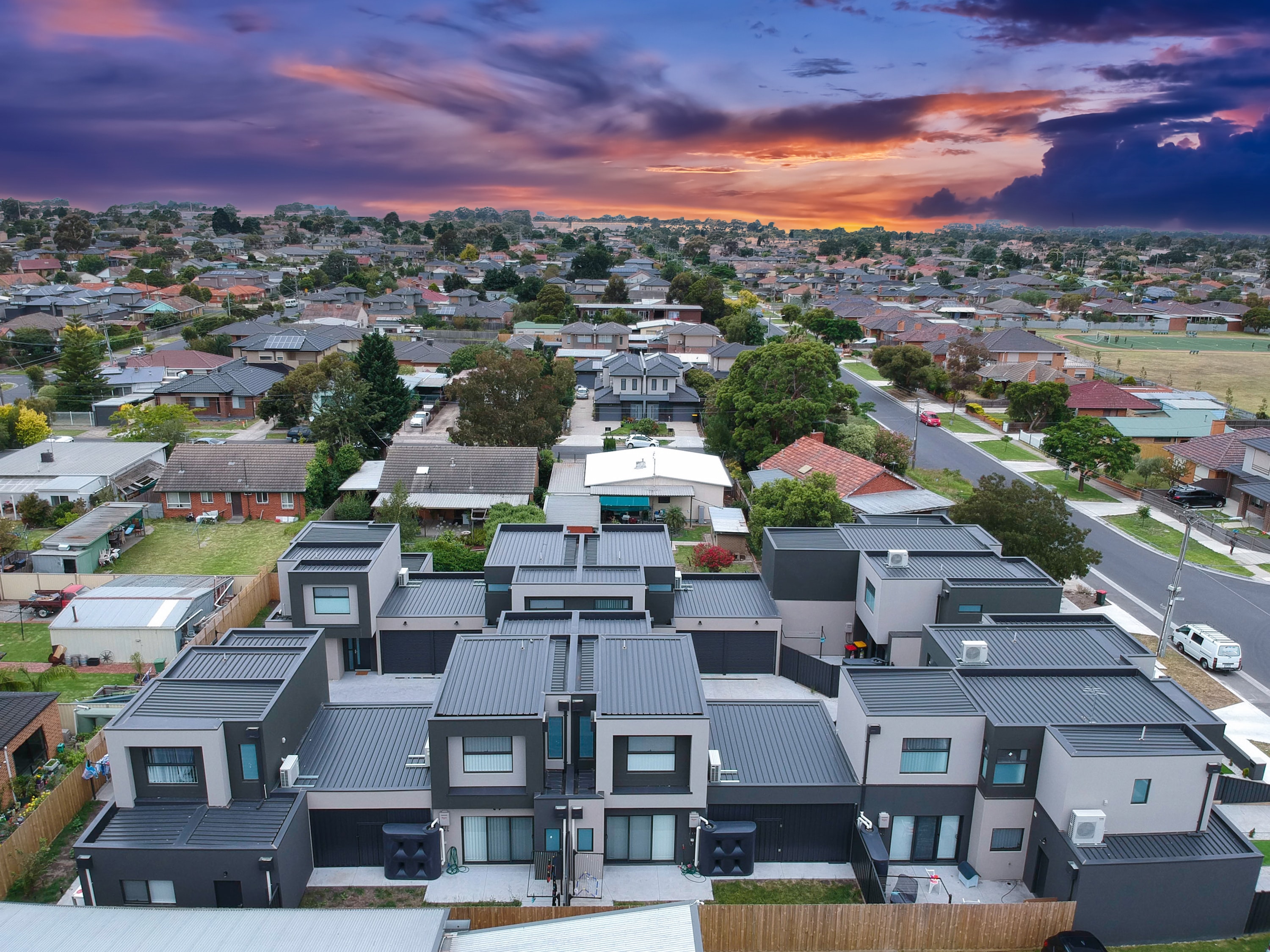Choosing Victoria's future
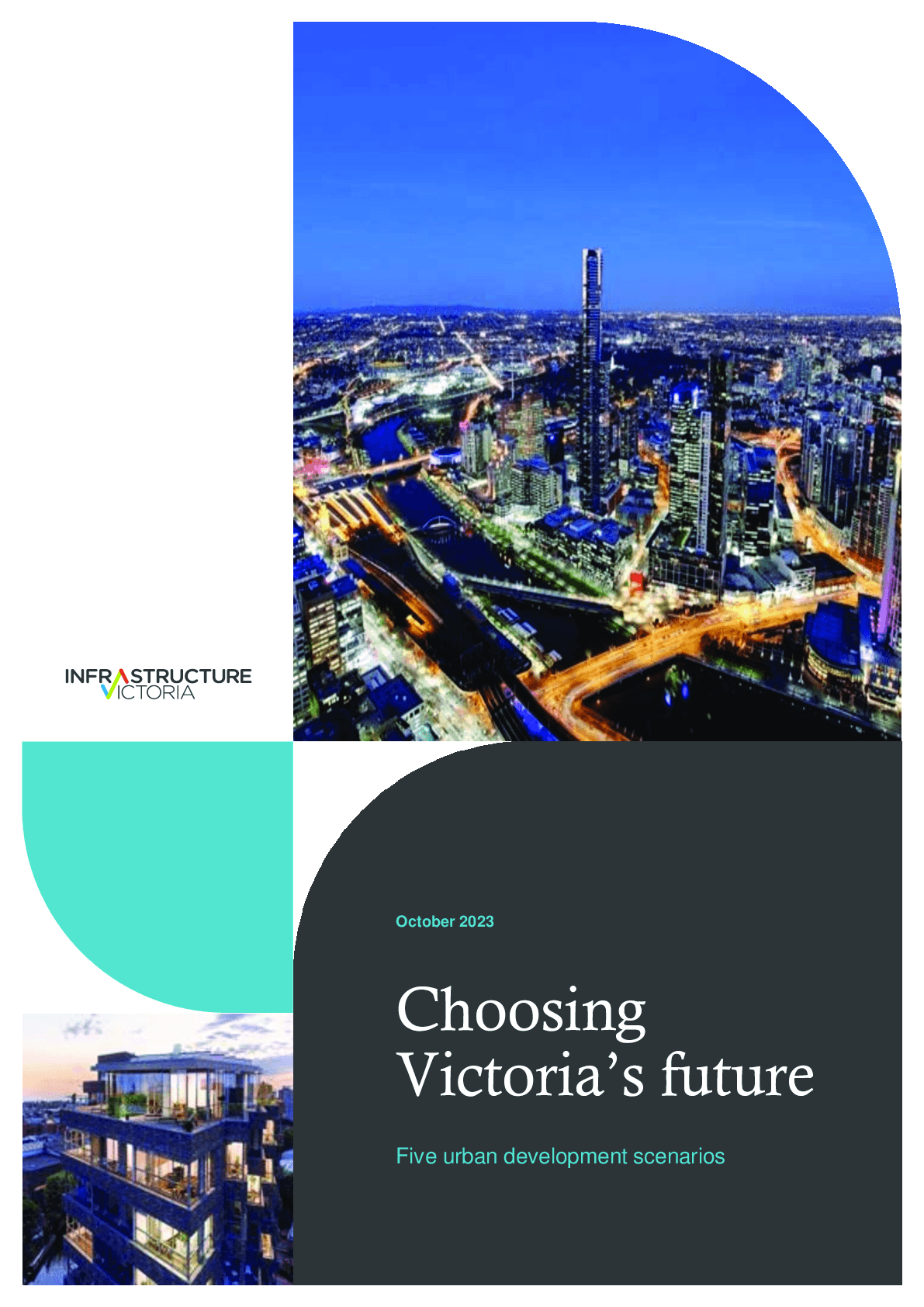
Five urban development scenarios
In this report, we show how different city shapes and growth patterns impact the state's economy, our environment and the quality of life for Victorians.
We explore 5 scenarios for how Victoria’s major cities might develop over 30 years::
- a dispersed city with more detached homes in Melbourne’s growth areas
- a consolidated city with more medium-density homes in Melbourne’s inner and middle areas
- a compact city with more high-density homes in Melbourne’s inner areas
- a network of cities with more homes in regional centres
- a distributed state with more homes in regional towns and rural areas.
We examine how different city shapes impact where people live and work, and the jobs and services they can access. We also consider land use for housing, travel patterns, the environment and changes to infrastructure needs.
Key findings
Overall, more compact cities offer Victorians a better quality of life and more choice.
More compact cities help businesses hire good staff and connect with customers and markets. Victorians would be up to $43 billion better off by 2056 with more compact cities, instead of spreading growth statewide.
More compact cities mean more land for agriculture and wildlife habitat. A sprawling city takes up 30,000 more hectares of land than a compact city. This is equal to over 12,000 times the size of the Melbourne Cricket Ground.
People living in dispersed cities would spend up to 70% more time in congested traffic to get to jobs and services.
Over 25% more people in a compact city would use public transport than in a dispersed city.
In a dispersed city, the government will need to spend an additional $41 billion on infrastructure by 2056. This equals a government cost of $59,000 extra for each new home built, compared to a compact city.
Recommendations
This report makes 5 recommendations to the Victorian Government help shape more compact and connected cities:
- Use a new plan for Victoria to reinforce growth in established areas. This plan should set boundaries for urban growth in regional cities. It should also include housing targets for established areas of Victorian cities. Use these targets in land use framework plans, regional growth plans, and the Victoria Planning Provisions.
- Develop and publish long-term plans for infrastructure sectors to meet the policies and targets set by a new plan for Victoria. Use these integrated land use and infrastructure plans to decide infrastructure project funding.
- Reform infrastructure contributions, remove taxes and subsidies that fuel sprawl, and change planning rules to create more compact cities in Victoria.
- Plan for and deliver infrastructure that supports more people and jobs located in established parts of major regional centres. This includes local transport, energy, water, and digital infrastructure.
- Plan for efficient and resilient electricity distribution infrastructure. stimulate development and use of zero or low carbon materials for building construction and operation methods. These must reduce greenhouse gas emissions.
Supporting documents
Land use scenarios and impact assessment framework: urban development scenarios
Technical document
PDF 13MB
Download
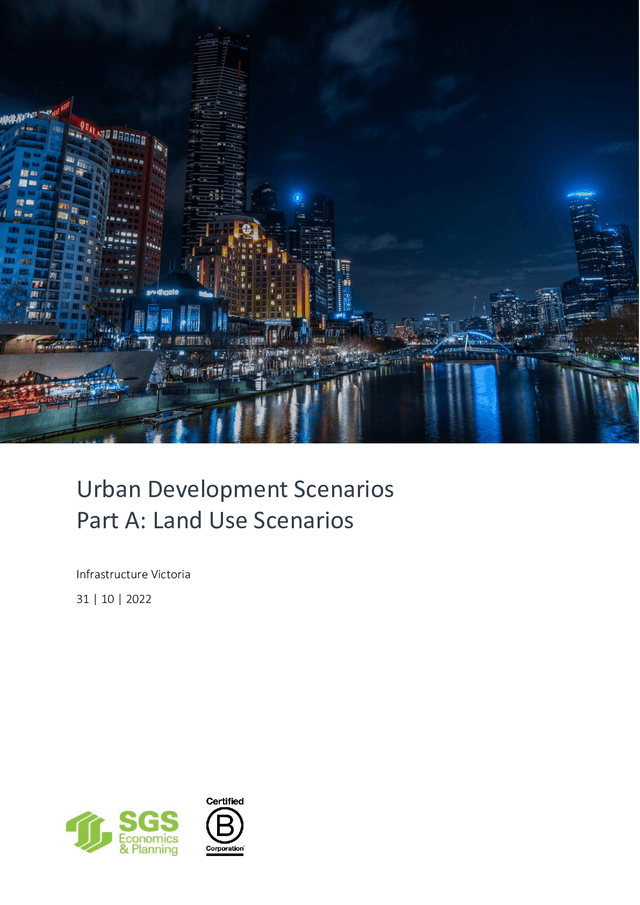
Economic, social and environmental impacts of alternative urban development scenarios for Victoria
Technical document
PDF 6MB
Download
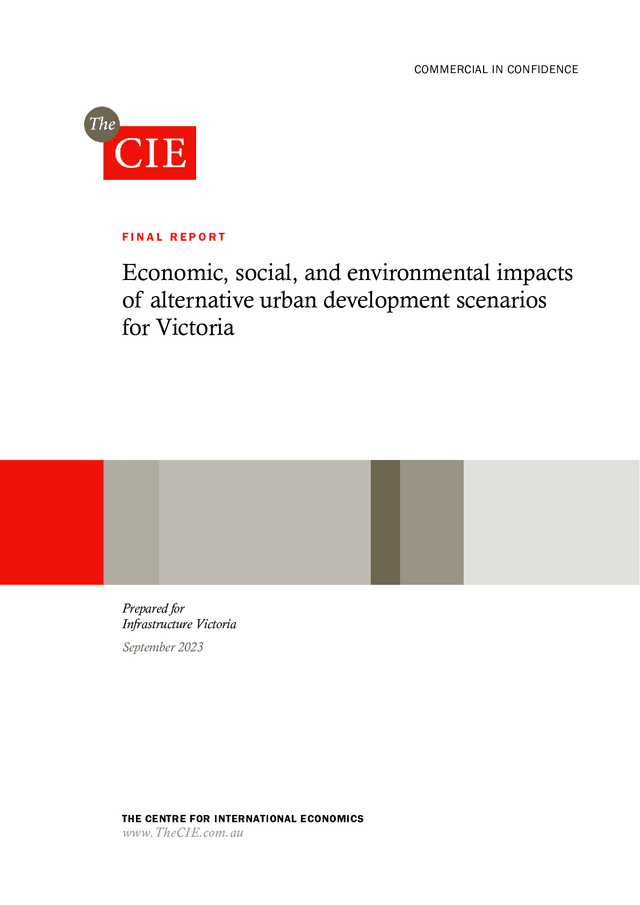
Strategic transport modelling: urban development scenarios
Technical document
PDF 9MB
Download
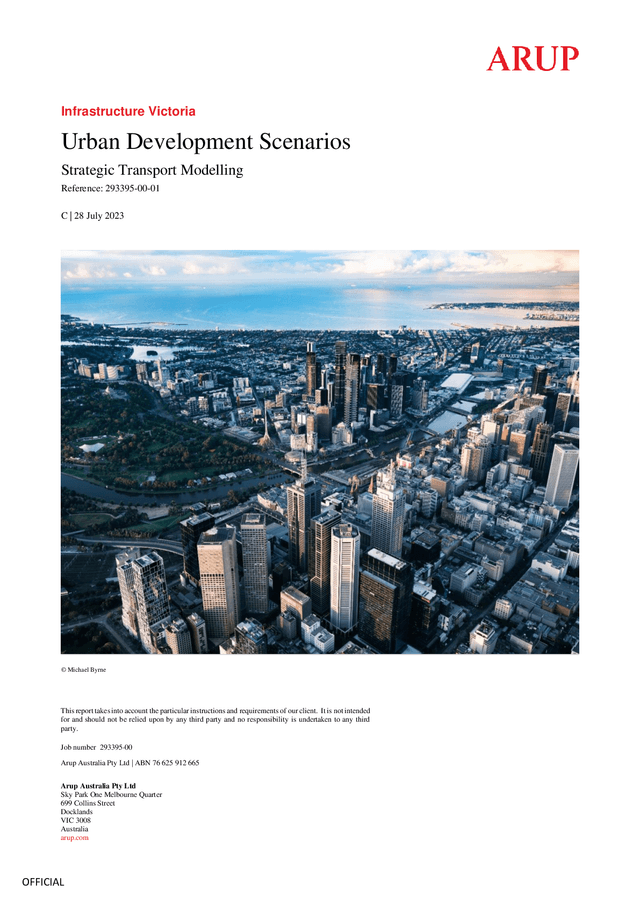
- File format and size
- PDF • 7MB
Download - Topics
- Type
- Research report
- Published
- 2023
